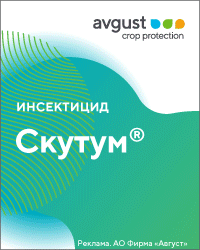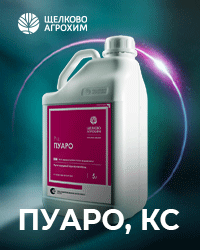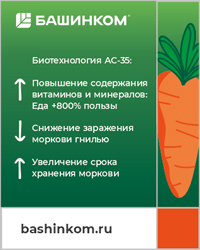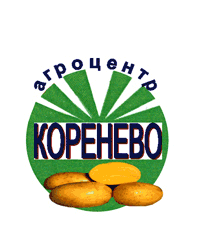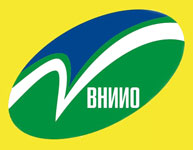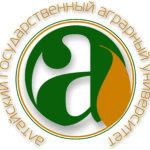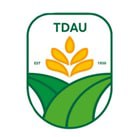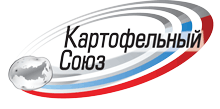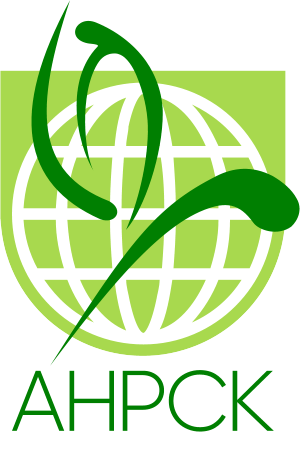The work purpose: determination of the reproductive potential of the pathogen of potato and tomato mushroom and pseudogenes nature to assess the effectiveness of means of protection of plants. The chosen approach allows to clarify the strength and reliability of the fungicidal effect against various pathogens. The experiments were carried out in 2013 and 2014 in the laboratory of plant protection, Russian state agrarian University – MTAA named after K. A. Timiryazev. For comparison of multiple approaches, evaluating the effectiveness of means of protection of plants, we analyzed the array data on the ability of pgpr n-fixing Klebsiella planticola to suppress early blight on potato. In recent years, this disease has become a leader on potatoes and very significant on tomato. In the field, their aggressiveness was determined by the prevalence of the disease (equivalent to frequency of infections), disease activity (degree of leaf tissue becoming necrotic, equivalent to necrosis) and the intensity of sporulation, detectable by microscopic analysis of field samples in the laboratory. The infection rate, necrosis size and sporulation intensity were determined by specially designed scales. To determine the intensity of sporulation, the studied plant tissues were kept in a moist chamber and then subjected to microscopy. The authors ranked the values of indicators of disease development and its causative agent, that is, referred to the standardized ranges (intervals) of values. The ranking assessment of diseases was based on the Weber – Fechner law. On the basis of these values, biological, sporulation and phytosanitary efficiency was calculated for all variants. Then all the obtained and calculated indicators were transferred to the ranks. Determining the presence of the fungicidal effect of treatments of rhizobacteria K. planticola, based on the calculated ranks determined the total ratings of all indicators in accordance with conservative and integral approaches. The values of the indices of development, conidia formation and aggressiveness allow us to calculate the thresholds of economic harmfulness, to build short-and long-term forecasts of the development of late blight and alternariosis on potatoes and tomato, and as a result to optimize decision-making systems (DMS) and decision support systems (DSS) to reduce environmental risks and economic costs of protective measures. It is established that the method is expedient to apply at especially important tests of various chemical means of protection of plants. In addition, the determination of the reproductive potential of potato pathogens of fungal and pseudo-fungal nature will allow to assess the phytosanitary potential of potato and tomato plantings, to clarify their breeding strategies and phytosanitary risks of subsequent epiphytoties on potatoes and tomato.
Keywords: potato, Phytophthora infestans, Alternaria alternata, Fusarium, reproductive potential, aggressiveness, phytosanitary potential, phytosanitary risk, Klebsiella planticola.
A.N. Smirnov, DSc, professor of the department of plant protection, RSAU – MAA named after K.A. Timiryazev, chief research fellow of the department of intensive agriculture, Vladimir Research Institute of Agriculture (VRIA). E-mail: smirnov@timacad.ru
E.S. Prikhodko, postgraduate student of the department of microbiology and immunology, RSAU – MAA named after K.A. Timiryazev. E-mail: eprihodko@rgau-msha.ru
V.V. Vasilchenko, postgraduate student of the department of plant protection, RSAU – MAA named after K.A. Timiryazev. E-mail: vasilcenkoviktoria16@gmail.com
V.P. Khohlov, postgraduate student of the department of plant protection, RSAU – MAA named after K.A. Timiryazev. E-mail: spirit8930@yandex.ru
A.A. Sukhorukov, master student of the department of plant protection, branch Phytopathology, RSAU – MAA named after K.A. Timiryazev. E-mail: djstalkerboy@yandex.ru
S.A. Kuznetsov, senior research fellow of the department of intensive agriculture, VRIA. E-mail: infosb@mail.ru
- Smirnov A. N., Kuznetsov S. A. Occurrence and morphology of oospores in natural populations of Phytophthora infestans in the Moscow region. Proceedings of MSAU. 2001. Vol. 4. Pp. 116–133 (In Russ.).
- Smirnov A.N., Kuznetsov S.A. Determination of reproduction strategies and viability of field populations of Phytophthora infestans. Plant Protection and quarantine. 2006. No.3. Pp. 20–23 (In Russ.).
- Smirnov A.N., Kuznetsov S.A. Determination of reproduction strategies and viability of Phytophthora infestans field populations. Proceedings of MSAU. 2006. Vol. 4. Pp. 28–41 (In Russ.).
- Smirnov A.N. Oospores of Phytophthora infestans. Mycology and Phytopathology. 2003. Vol. 37. No. 1. Pp. 3–21 (In Russ.).
- Smirnov A.N. Characteristics of Mexican strains of Phytophthora infestans from the Toluca valley. II. Germination of zoosporangia. Mycology and Phytopathology. 2007. Vol. 41. Pp. 383–391 (In Russ.).
- Dyakov Yu. T., Suprun L.M. Probabilistic method of calculation of virulence gene frequencies and its application for analysis of potato Phytophthora infestans pathogen populations. Agricultural biology. 1984. No.3. Pp. 111–118 (In Russ.).
- Anisimov B.V. et al. Protection of potato from diseases, pests and weeds. M: Potato Grower, Publ. House of Ivan Korytov, 2009. 271 p. (In Russ.).
- Workshop on agricultural Phytopathology. Ed. by K. V. Popkova. Moscow. Kolos. 1976. 336 p. (In Russ.).
- Smirnov A.N., Prikhodko E.S., Khokhlov V.P., Bibik T.S. Complex Fusarium-Alternaria as a universal challenge. Advances in medical Mycology. 2018. Vol. 19. Pp. 62–65 (In Russ.).
- Smirnov A. N. et al. Statistical approaches and methods in accounting of plant diseases. Implementation of methodological and methodical ideas of prof. B.A. Dospekhov in improving of adaptive landscape systems of agriculture: conference proceedings. Ivanovo: Presstop. 2017. Vol. Pp. 57–61 (In Russ.).
- Selitskaya O. V. et al. Features of plant colonization of the introduced population of Klebsiella planticola under the influence of stress factors. Proceedings of MSAU. 2013. No.1. Pp. 48–56 (In Russ.).
- Chitika A.V. et al. The yield of potatoes on sod-podzol soils of Non-chernozem zone with the application of growth regulators. Forage production. 2015. No.5. Pp. 22–26 (In Russ.).
- Prikhodko E.S., Selitskaya O.V., Smirnov A.N. Influence of fungicides and rhizobacteria Klebsiella planticola on the development of potato alternariasis pathogen. Proceedings of MSAU. 2016. Vol. 5. Pp. 68–80 (In Russ.).
- Kozlovsky B.E., Filippov A.V. Early blight on potatoes is becoming more malicious. Protection and quarantine of plants. 2007. No.5. Pp. 12–13 (In Rus.).
- Zolfagari A. et al. Late Blight and alternariosis of potatoes and tomatoes under abnormal weather conditions in the Moscow region. Protection and quarantine of plants. 2011. No. 12. Pp. 40–42 (In Russ.).
- Smirnov A.N., Kuznetsov S.A. Tomato late Blight. Plant protection and quarantine. 2006. No.3. Pp. 20–23 (In Russ.).
- Smirnov A.N. et al. Leaf-stem complex of phytopathogenic and accompanying fungi in potato and tomato agrocenoses of different regions of Russia. Proceedings of MSAU. 2015. Vol. 3. Pp. 36–46 (In Russ.).

